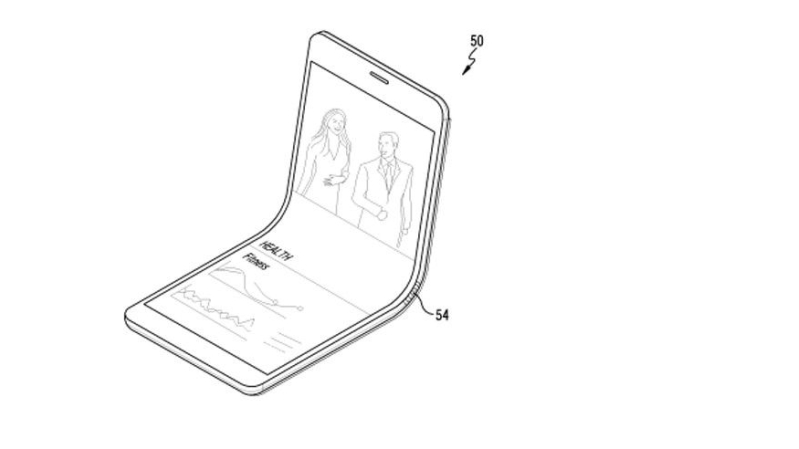
Remember those flip phones in the past, such as the Motorola RAZR that took the world by storm? The RAZR was certainly a thing of beauty, where it combined functionality and aesthetics well into a single design. Also known as a clamshell handset, many other manufacturers also followed suit, with Samsung being one of them. I still remember their Blue-I device that came with a blue backlight on the front circular display, now that was pretty cool back in the day. Well, it seems that such a phone design might be making a comeback in Samsung’s circle of handsets, although it will be far more futuristic than just having a hinge.
In fact, a Korean patent filing has pointed to a smartphone (presumably) which has a connector that is so flexible, it can be bent around. This bending connector will do the work of dividing the upper and lower half of the mobile device in two, equally. In fact, the connector would not look too different from that of the Microsoft Surface notebook’s hinge, but we are pretty sure that it will have its differences, otherwise it would not be on the receiving end of a patent.
From what we know of this particular patent, the touchscreen will make up part of the entire device’s surface, where you can then fold it without thinking twice. Samsung is not the only one the idea of having a mobile device that will also boast of a foldable display, as there are also other manufacturers out there such as LG (with their rollable OLEDs, although we are pretty sure that those can be folded too). It must be noted that such foldable display technology among the various manufacturers happen to remain in the early prototype phase, and are still a long way from being made available commercially.
Do take note that many a time, having a patent approved does not automatically translate to having said feature being implemented in actual hardware that is being sold on the market. The engineering department of Samsung will obviously have their work cut out for them, and one of the major engineering challenges when it comes to a device that has a foldable display would be to figure out exactly how the myriad of other internal parts such as the battery, camera components, processor, and memory, among others, will be able to fit inside.
In Samsung's patent, it does seem as though the screen itself is bent inwards as opposed to outwards. If one were to follow the line of thinking behind such logic, then it might be a whole lot more easy to implement such a display compared to another display which is able to bend both ways. The patent's images themselves do point to the possibilities and potential benefits of a screen which will be able to fold inwards right down the middle, such as the ability to enter text while you watch a video on the other side, such as having a really miniaturized version of a notebook in the palm of your hands.







